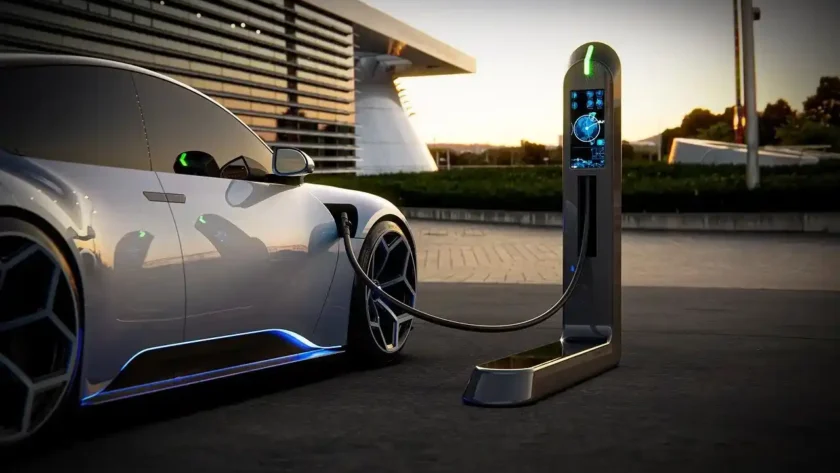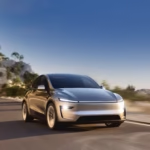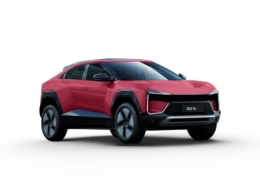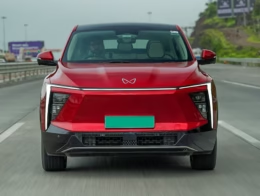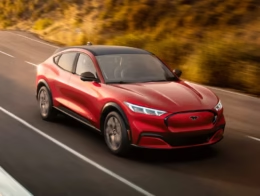In a world where climate change looms large and fuel prices fluctuate wildly; electric cars are no longer just a futuristic concept—they’re becoming a powerful reality. But what’s really driving this electric revolution? The answer lies in the heart of these vehicles: their batteries.
From efficiency that puts traditional cars to shame, to charging innovations that could make “filling up” a thing of the past, the latest electric car batteries are full of surprises. Did you know that some electric vehicles can now accelerate from 0 to 60 mph in under five seconds, or that future batteries might be made from seawater? These advancements aren’t just changing how we drive—they’re reshaping our entire relationship with transportation and energy.
As we dive into the 10 Surprising Facts About Latest Electric Car Batteries, prepare to be amazed by the leaps in technology, environmental benefits, and economic impacts that are propelling us towards a cleaner, more efficient future. From battery maintenance secrets to recycling solutions, we’ll explore how these powerhouses are not just changing our cars, but potentially our world. Let’s plug in and power up our knowledge on this electrifying journey!
Efficiency and Performance of Electric Cars
A. High efficiency rate compared to gas-powered vehicles
Electric cars demonstrate remarkable efficiency compared to their gas-powered counterparts. While conventional vehicles typically operate below 40% efficiency due to energy loss during fuel combustion, electric vehicles (EVs) can convert over 70% of electricity into movement. Some EV models even achieve up to 95% efficiency, making them significantly more energy-efficient.
This efficiency translates into substantial cost savings for EV owners. Depending on driving mileage, potential annual savings can reach up to £1,955 on running costs. The Electrifying.com Efficiency Rating (E-Rating™) helps consumers understand and compare EV efficiency, considering factors such as:
- 🔸Conversion of electrical power into mileage
- 🔸Charging speed
- 🔸Energy-saving features (e.g., heat pumps and brake recuperation)
B. Rapid acceleration and instant torque
Electric vehicles offer superior performance in terms of acceleration and torque delivery. Unlike conventional cars that suffer from reduced torque at low speeds, EVs provide instant torque for smoother control and rapid acceleration. This characteristic enhances the driving experience and offers better maneuverability in various driving conditions.
C. Improved range and performance with technological advancements
As EV technology progresses, we’re seeing significant improvements in range and overall performance. Here’s a comparison of key factors affecting EV efficiency:
| Factor | Impact on Efficiency |
|---|---|
| Regenerative braking | Captures up to 70% of braking energy |
| Vehicle weight | Lighter cars experience less aerodynamic drag |
| Optimal speed | Best efficiency maintained at 45-60 mph |
| Tyre pressure | Proper pressure reduces rolling resistance |
| Pre-conditioning | Preserves battery energy when done while plugged in |
To maximize EV efficiency, drivers can:
- 🔸Utilize regenerative braking effectively
- 🔸Minimize the use of non-essential features
- 🔸Maintain proper Tyre pressure
- 🔸Pre-condition the vehicle while plugged in
- 🔸Cruise at optimal speeds (around 60 mph) for maximum range
With these efficiency and performance advantages in mind, next, we’ll explore the environmental benefits of electric vehicles, highlighting how their superior efficiency translates into reduced environmental impact.
Environmental Benefits of Electric Vehicles
Now that we’ve explored the efficiency and performance of electric cars, let’s delve into their environmental benefits, which are a significant factor driving their increasing popularity.
A. Zero tailpipe emissions
Electric vehicles (EVs) stand out for their remarkable environmental advantage: zero tailpipe emissions. Unlike conventional internal combustion engine (ICE) vehicles, EVs produce no direct emissions during operation. This characteristic is crucial in combating air pollution, particularly in urban areas where vehicle emissions contribute significantly to smog and associated health risks.
B. Lower lifetime CO2 emissions
While EVs have zero tailpipe emissions, it’s essential to consider their overall environmental impact through a well-to-wheel analysis:
| Emission Type | Electric Vehicles | Conventional Vehicles |
|---|---|---|
| Tailpipe | 0 g CO2/km | 165-170 g CO2/km |
| Average | 50 g CO2/km | 165-170 g CO2/km |
EVs emit an average of just 50 grams of CO2 per kilometer, significantly lower than the 165-170 grams emitted by traditional petrol and diesel cars. This difference translates to an annual saving of approximately 1.5 million grams of CO2 per EV, equivalent to the emissions from four return flights from London to Barcelona.
It’s worth noting that the environmental benefits of EVs can vary depending on the electricity source:
- 🔸Regions using low-polluting energy sources see a more pronounced life cycle emissions advantage for EVs.
- 🔸Areas with higher-emission electricity generation may experience less significant benefits.
C. Reduced noise pollution in urban settings
Beyond air quality improvements, EVs contribute to reducing noise pollution in urban environments. Their quiet operation provides a notable advantage over the constant hum of ICE vehicles, particularly in densely populated areas.
With these environmental benefits in mind, next, we’ll explore the cost-effectiveness of electric cars, examining how their lower emissions translate into economic advantages for both individuals and society as a whole.
Cost-Effectiveness of Electric Cars
Now that we’ve explored the environmental benefits of electric vehicles, let’s delve into their cost-effectiveness, which is equally compelling.
Lower maintenance costs due to fewer moving parts
Electric vehicles (EVs) offer significant savings in maintenance and repair costs compared to their gasoline-powered counterparts. With fewer moving parts, EVs require less frequent servicing and are less prone to mechanical issues. Studies show that EV owners can expect to spend approximately half as much on maintenance and repairs over the vehicle’s lifetime, resulting in average savings of around $4,600.
Decreasing purchase prices and government incentives
While the initial purchase price of EVs has historically been higher than traditional vehicles, this gap is rapidly closing:
- 🔸As of September 2023, the average price of new EVs has decreased significantly, making them only slightly more expensive than new gas vehicles.
- 🔸Government incentives further reduce the effective cost of EVs:
- ➡️ Federal tax credits of up to $7,500 for new EVs
- ➡️ State-specific incentives available through local Clean Cities coalitions
- ➡️ Rebates offered by the Inflation Reduction Act
| Cost Factor | Electric Vehicles | Gas Vehicles |
|---|---|---|
| Initial Price | Slightly higher | Lower |
| Maintenance | ~50% lower | Higher |
| Fuel Costs | $800-$1,000 annual savings | Higher |
| Tax Incentives | Up to $7,500 federal credit | Not applicable |
Longer lifespan and reliability
EVs are proving to be highly reliable and long-lasting:
- 🔸EV batteries are typically warrantied for 8 years or 100,000 miles
- 🔸In moderate climates, EV batteries can last between 12 to 15 years
- 🔸Many EV models are retaining their value similarly or better than traditional vehicles
The longevity of EVs contributes to their overall cost-effectiveness, as owners can expect to benefit from lower operating costs for an extended period.
With these economic advantages in mind, next, we’ll explore the charging innovations for electric vehicles that are making EV ownership increasingly convenient and accessible.
Charging Innovations for Electric Vehicles
Now that we’ve explored the cost-effectiveness of electric cars, let’s dive into the exciting world of charging innovations that are making electric vehicles more convenient and efficient than ever before.
Convenient home charging options
Home charging has become increasingly accessible for electric vehicle owners. With Level 1 (120V) and Level 2 (240V) charging options, EV owners can easily charge their vehicles overnight or during downtime at home. Level 2 charging, in particular, offers faster charging speeds, typically allowing for a full charge in 2-6 hours, depending on the vehicle’s battery capacity.
| Charging Level | Voltage | Charging Speed | Typical Use Case |
|---|---|---|---|
| Level 1 | 120V | Slow | Overnight charging |
| Level 2 | 240V | Moderate | Home and workplace charging |
Emerging wireless charging technologies
Wireless charging is gaining traction as a convenient alternative to traditional plug-in methods. This technology utilizes electromagnetic induction to transfer power from a charging pad to the vehicle, eliminating the need for physical cables. Wireless charging can be categorized into:
- 🔸Near-field technologies:
- ➡️ Inductive charging
- ➡️ Capacitive charging
- 🔸Medium-field technology:
- ➡️ Magnetic-gear charging
While still in development, these wireless solutions promise to make charging as simple as parking your vehicle over a designated spot.
Ultra-fast charging solutions in development
To address concerns about charging times and range anxiety, ultra-fast charging technologies are being actively developed. DC fast charging is at the forefront of this innovation, enabling rapid charging capabilities that can significantly reduce charging times to under an hour for many electric vehicles.
Key developments in ultra-fast charging include:
- 🔸High-performance DC power supplies
- 🔸Bidirectional charging capabilities
- 🔸Smart grid integration for optimized energy distribution
These advancements aim to make long-distance travel in electric vehicles more feasible and convenient, potentially rivaling the refueling times of traditional gasoline-powered vehicles.
As we look towards the future of electric vehicles, the next crucial area of development lies in battery technology breakthroughs. These innovations will work hand-in-hand with charging advancements to further enhance the performance and practicality of electric vehicles.
Battery Technology Breakthroughs
Now that we’ve explored charging innovations for electric vehicles, let’s delve into the exciting realm of battery technology breakthroughs. These advancements are crucial for addressing current challenges in electric vehicle adoption, such as range anxiety and lengthy charging times.
Hybrid silicon anodes for improved capacity
Researchers are making significant strides in enhancing battery capacity through the use of hybrid silicon anodes. These innovative anodes are not only improving performance but are also being developed with sustainability in mind:
- 🔸Sourced from barley husk ash, making them environmentally friendly
- 🔸Enhance overall battery capacity
- 🔸Sustainably produced, reducing environmental impact
Cobalt-free batteries for sustainability
The pursuit of more sustainable and efficient batteries has led to the development of cobalt-free alternatives:
| Feature | Benefit |
|---|---|
| Improved efficiency | Higher performance for electric vehicles |
| Reduced environmental impact | Less reliance on cobalt mining |
| Lower costs | Potential for more affordable electric vehicles |
Companies are actively working on these cobalt-free batteries to address both performance and sustainability concerns in the electric vehicle industry.
Solid-state batteries for enhanced safety and rapid charging
Solid-state batteries represent a significant leap forward in battery technology, offering several advantages over traditional lithium-ion batteries:
- 🔸Enhanced safety due to the elimination of liquid electrolytes
- 🔸Rapid charging capabilities
- 🔸Improved energy density
Leading companies like Toyota and QuantumScape are at the forefront of solid-state battery development, with expectations for commercial availability by the mid-2020s. A notable example is China’s IM Motors, which plans to introduce a sedan featuring a 130-kWh solid-state battery capable of delivering an impressive 622 miles of range.
These advancements in battery technology are paving the way for electric vehicles with longer ranges, faster charging times, and improved safety profiles. As we move forward, it’s crucial to consider how these breakthroughs will impact the unique features of electric car batteries, which we’ll explore in the next section.
Unique Features of Electric Car Batteries
Now that we’ve explored the breakthroughs in battery technology, let’s delve into the unique features that set electric car batteries apart from conventional ones.
Regenerative braking for energy recapture
Electric vehicles (EVs) utilize a sophisticated system called regenerative braking, which significantly enhances their energy efficiency. This feature allows the electric motor to act as a generator, converting kinetic energy into electrical energy during deceleration. The recaptured energy is then stored in the battery, extending the vehicle’s range and reducing wear on traditional brake components.
Cold-cranking amps (CCA) for improved cold weather performance
While electric car batteries face challenges in cold weather, manufacturers have implemented measures to improve their performance:
- 🔸Thermal management systems regulate battery temperature
- 🔸Preconditioning features enhance efficiency in varying climates
- 🔸Advanced battery management systems (BMS) monitor and optimize performance
These innovations help maintain battery health and performance even in harsh conditions, addressing concerns about EV reliability in colder regions.
Deep-cycle batteries for frequent discharges
Electric vehicles employ deep-cycle batteries designed to withstand frequent and deep discharges without significant damage. This characteristic is crucial for EVs, as it allows for:
- 🔸Extended driving ranges
- 🔸Consistent performance over time
- 🔸Longer overall battery lifespan
| Battery Type | Energy Density | Cost | Safety |
|---|---|---|---|
| NMC/NMCA | High | High | Lower |
| LFP | Lower | Lower | Higher |
The table above compares two common lithium-ion battery types used in EVs, highlighting their trade-offs in energy density, cost, and safety.
Electric car batteries are engineered to last at least a decade, with manufacturers typically offering warranties of 8-10 years or up to 150,000 miles. These robust batteries are equipped with extensive monitoring systems that ensure longevity and optimal performance throughout their lifespan.
As we transition to discussing battery maintenance and longevity in the next section, it’s important to note that the unique features of electric car batteries not only enhance performance but also contribute significantly to their overall durability and efficiency.
Battery Maintenance and Longevity
Now that we’ve explored the unique features of electric car batteries, let’s delve into the crucial aspects of battery maintenance and longevity. Proper care and understanding of these advanced power sources can significantly extend their lifespan and performance.
Regular inspection and cleaning requirements
Electric vehicle (EV) batteries require minimal maintenance compared to traditional internal combustion engines. However, regular inspections are essential to ensure optimal performance:
- 🔸Check for any visible damage or corrosion
- 🔸Keep the battery and surrounding areas clean and dry
- 🔸Follow manufacturer guidelines for maintenance schedules
While the battery itself needs little attention, EV owners should focus on:
- 🔸Tire care: Due to the increased weight of EVs, tires may wear faster
- 🔸Brake maintenance: Despite less frequent use due to regenerative braking
- 🔸Software updates: Crucial for battery management system optimization
Impact of discharge and recharge cycles on lifespan
The longevity of EV batteries is significantly influenced by charging habits:
| Charging Practice | Impact on Battery Life |
|---|---|
| Maintaining 20-80% charge | Optimal for longevity |
| Frequent fast charging | Can lead to faster degradation |
| Full discharge/charge cycles | May reduce overall lifespan |
To maximize battery life:
- 🔸Avoid frequent use of DC fast charging
- 🔸Follow manufacturer recommendations for charging
- 🔸Utilize advanced battery management systems that regulate charging
Natural self-discharge and storage considerations
EV batteries experience natural self-discharge over time, which can affect their longevity and performance:
- 🔸Temperature management:
- ➡️ Avoid extreme temperatures
- ➡️ Consider preconditioning in extreme weather
- 🔸Long-term storage:
- ➡️ Maintain a charge level between 20-80%
- ➡️ Store in a cool, dry environment
- 🔸Regular use:
- ➡️ Occasional driving helps maintain battery health
- ➡️ Monitor battery performance for early detection of degradation
By implementing these practices, EV owners can expect their batteries to last between 12 to 15 years, covering 100,000 to 200,000 miles. With ongoing advancements in battery technology, we can anticipate even more impressive longevity and performance in future EV models.
Future Battery Technologies
Now that we’ve explored battery maintenance and longevity, let’s dive into the exciting world of future battery technologies that promise to revolutionize electric vehicles.
Carbon nanotube electrodes for power boosts
Carbon nanotube electrodes represent a significant leap forward in battery technology. These innovative electrodes offer substantial power boosts compared to traditional lithium-ion batteries. By incorporating carbon nanotubes, researchers aim to enhance the overall efficiency and performance of electric vehicle batteries.
| Advantage | Description |
|---|---|
| Power boost | Significant increase in battery power output |
| Efficiency | Improved energy transfer within the battery |
| Sustainability | Potential for more environmentally friendly production |
Seawater-extracted batteries for cost reduction
In the pursuit of more affordable and sustainable battery options, scientists are exploring seawater-extracted batteries. This groundbreaking approach promises:
- 🔸Lower production costs
- 🔸Higher performance compared to traditional lithium-ion batteries
- 🔸Reduced environmental impact due to abundant and easily accessible materials
These seawater-derived batteries could potentially revolutionize the electric vehicle industry by making EVs more accessible to a broader range of consumers.
Graphene batteries for extended range
Graphene batteries are poised to be a game-changer in the electric vehicle market. These advanced batteries offer:
- 🔸Extended range capabilities, with potential distances of up to 500 miles on a single charge
- 🔸Incredibly short charging times, addressing one of the main concerns of current EV owners
- 🔸Enhanced energy density, allowing for more compact and efficient battery designs
The development of graphene batteries aligns with the growing demand for EVs that can compete with traditional combustion engine vehicles in terms of range and convenience.
As we look towards the future of electric vehicles, these battery technologies hold the promise of overcoming current limitations and driving widespread adoption. With improved power, reduced costs, and extended range, the next generation of EVs will be better equipped to meet consumer needs and environmental goals.
Moving forward, we’ll explore how these advancements in battery technology contribute to the broader economic impact of electric vehicles, shaping industries and creating new opportunities in the automotive sector.
Economic Impact of Electric Vehicles
Now that we’ve explored future battery technologies, let’s examine the economic impact of electric vehicles, which is closely tied to these advancements.
Creation of green jobs in manufacturing and infrastructure
The transition to electric vehicles (EVs) is not just an environmental necessity but also a significant economic opportunity. As the EV market expands, it’s creating a new wave of green jobs across various sectors:
- 🔸Manufacturing: Production of EVs, batteries, and related components
- 🔸Infrastructure: Installation and maintenance of charging stations
- 🔸Research and Development: Advancing battery technology and vehicle efficiency
This job creation is particularly noteworthy in developing nations, where over half of the countries studied could benefit economically from the shift to electric mobility.
Projected growth in global EV sales
The EV market is experiencing rapid growth, with impressive projections for the future:
| Year | Global EV Market Share |
|---|---|
| 2022 | 14% |
| 2030 | 35% (projected) |
Key factors driving this growth include:
- 🔸Supportive legislation
- 🔸Expanding battery manufacturing capabilities
- 🔸Increasing consumer acceptance in major markets like China, the US, and Europe
By 2040, EVs could comprise 50% of all vehicles on the road, significantly reducing dependence on oil and potentially positioning the US as a major net oil exporter.
Emergence of a new “gold rush” in battery innovation
The EV revolution has sparked a new era of innovation, particularly in battery technology:
- 🔸Market projections: The EV market is expected to reach $8.8 trillion by 2030 and a staggering $56.7 trillion by 2050.
- 🔸Investment opportunities: Growing demand for sustainable energy solutions is attracting significant investor interest.
- 🔸Economic resilience: By reducing reliance on volatile oil prices, EVs help insulate economies from potential recessions linked to fuel price spikes.
This battery innovation “gold rush” is not only driving technological advancements but also reshaping the global economic landscape.
As we look ahead to the next section on recycling and environmental concerns, it’s clear that the economic impact of EVs extends beyond immediate job creation and market growth. The shift towards sustainable transportation is intertwined with broader environmental considerations, which we’ll explore in more detail.
Recycling and Environmental Concerns
Now that we’ve explored the economic impact of electric vehicles, let’s delve into the crucial aspect of recycling and environmental concerns associated with electric car batteries.
A. Proper disposal methods for hazardous components
Electric vehicle (EV) batteries contain hazardous components that require careful handling and disposal. Improper disposal can lead to significant environmental and safety risks:
- 🔸Fire hazards: Lithium exposure can cause fires in waste processing facilities
- 🔸Toxic fumes: Incorrect handling may release harmful substances
- 🔸Environmental contamination: Hazardous materials can leach into soil and water
To mitigate these risks, specialized recycling processes are essential:
- 🔸Pyrometallurgy: Heating metal oxides to extract valuable metals
- 🔸Hydrometallurgy: Using chemical processes like acid leaching to separate metals
- 🔸Direct recycling: Dismantling batteries to recover cathode materials for new production
B. Importance of recycling dead car batteries
Recycling EV batteries is crucial for several reasons:
- 🔸Conservation of critical minerals
- 🔸Reduction of greenhouse gas emissions
- 🔸Mitigation of ethical concerns in the supply chain
| Benefits of Recycling | Impact |
|---|---|
| Material recovery | Lessens dependence on new mineral extraction |
| Emissions reduction | Can reduce up to 60% of lifecycle emissions for EVs |
| Ethical sourcing | Addresses concerns related to conflict zones |
C. Development of more sustainable battery materials
Efforts to create more sustainable battery technologies are ongoing:
- 🔸Research into efficient recycling methods like direct recycling
- 🔸Development of battery passports for enhanced recycling practices
- 🔸Exploration of alternative materials to reduce reliance on critical minerals
Challenges remain, including:
- 🔸Limited recycling facilities, particularly in Europe
- 🔸Complex and energy-intensive recycling processes
- 🔸Substantial non-recyclable waste generation
To address these issues, governments and industries are collaborating on initiatives such as:
- 🔸Implementing regulatory frameworks (e.g., EU’s battery passport system)
- 🔸Encouraging local recycling efforts through legislation (e.g., US Inflation Reduction Act)
- 🔸Investing in technological advancements for more sustainable battery production and recycling
As EV adoption increases, scaling up recycling efforts and developing more sustainable materials will be crucial for ensuring a truly environmentally friendly transportation future.
Conclusion
The rapid advancements in electric car battery technology are revolutionizing the automotive industry. From improved efficiency and performance to environmental benefits and cost-effectiveness, electric vehicles are becoming increasingly attractive to consumers. Innovations in charging technology, including wireless solutions, are addressing range anxiety concerns. Meanwhile, breakthroughs in battery design, such as solid-state and graphene batteries, promise even greater range and faster charging times in the near future.
As we look ahead, the economic impact of electric vehicles is set to grow, creating new job opportunities in manufacturing and infrastructure development. However, it’s crucial to address recycling and environmental concerns associated with battery production and disposal. By embracing these technological advancements and addressing potential challenges, we can pave the way for a more sustainable and efficient transportation future. Whether you’re considering purchasing an electric vehicle or simply interested in the technology, staying informed about these developments will help you make environmentally conscious and economically savvy decisions in the evolving automotive landscape.


